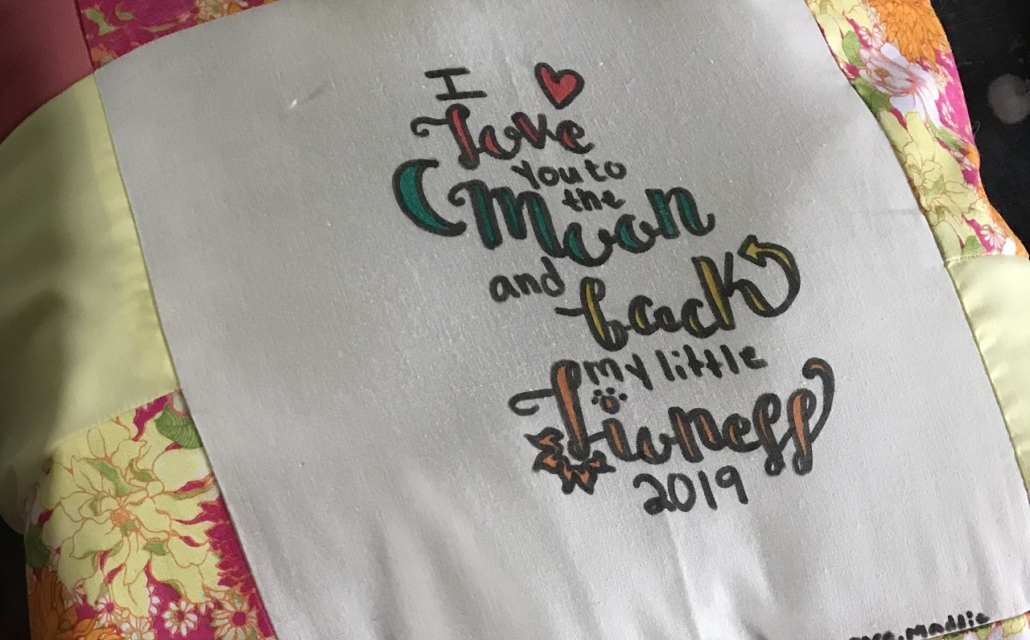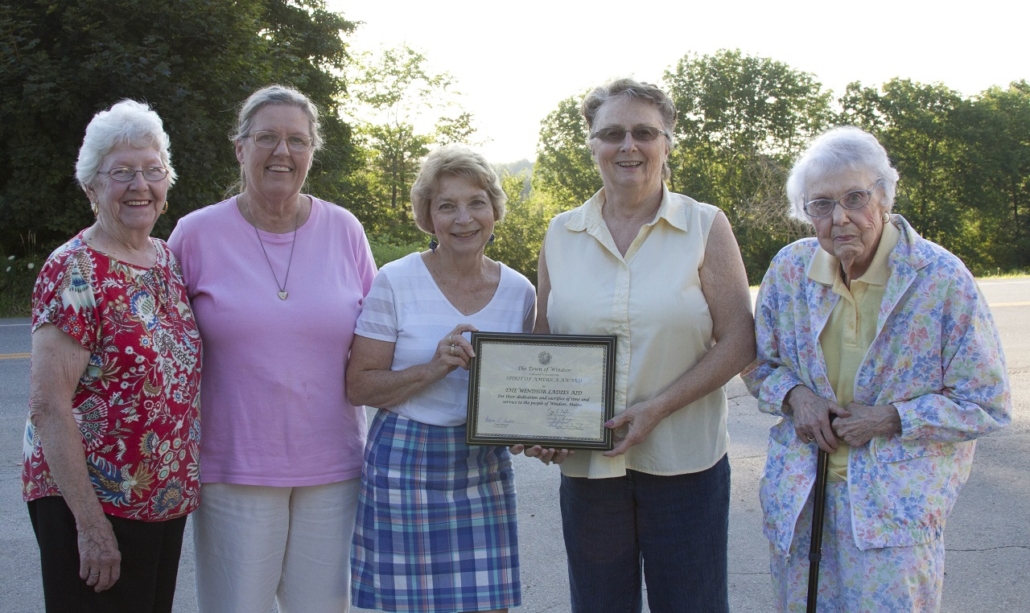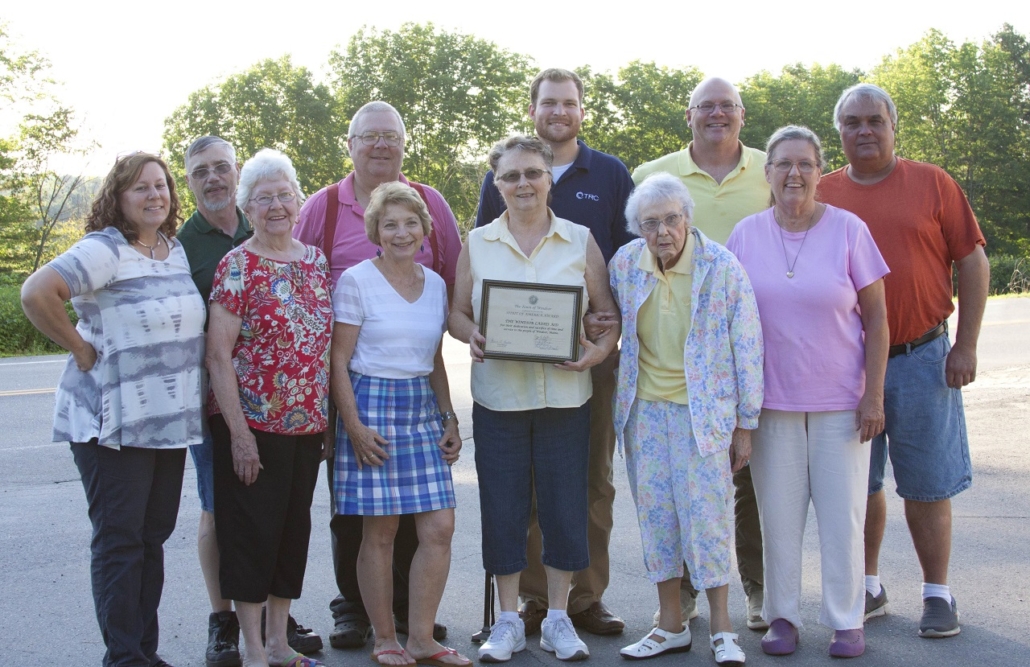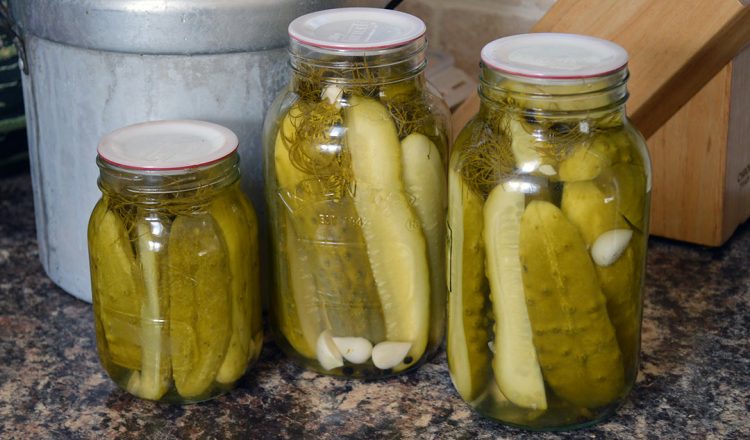Sew for a Cause group gears back up for winter sessions

Pillows created by Sew for a Cause for foster children to decorate and give to their siblings at Camp to Belong. (photo by Jeanne Marquis)
by Jeanne Marquis
In talented hands, fabric and thread can help improve lives of many individuals, both locally and in a distant continent. This is the motivation of a group called Sew for a Cause, established by Rachel Kilbride. Sew for a Cause reconvened after their short summer break to work on projects on September 5, at the St. Bridget Center, in Vassalboro. Future sewing sessions will be September 19 and October 3 from 10 a.m. to 4 p.m.
Sew for a Cause began in November 2018 and now has over 20 passionate, highly productive members. Their love for sewing is surpassed only by their love of giving what they have made to comfort others: newborn infants, elderly, foster children, veterans, families in shelters and the infirmed. Among the items these skilled ladies sew are comfort caps for cancer patients, baby quilts, pillowcases, lap and full-size quilts.
Rachel Kilbride says that 90 percent of their material and batting is donated. Oftentimes, fabric and unfinished sewing projects are presented to the group when neighbors are cleaning out a parent’s home. Sew for a Cause graciously accepts most sewing materials and volunteer hours. Sometimes fabric donations come in just when the materials are needed the most. In this first year, the group had a project that required an enormous amount of fleece. No sooner had they discovered the need, Rachel had received a phone call from a donor who had the correct yardage.
Sew for a Cause also produces unique fabric items for special needs. For example, they create fidget quilts for Alzheimer’s patients to help simulate memories. These are lap size quilts with touchable symbols of what may have been important to the individual in their younger years, such as small toy baseball bat or a small fuzzy dog sewn into the quilt. Touching these symbols helps to open a dialogue between Alzheimer’s patient and their caregivers.
Another special need was fulfilled by Bunnie Picher who sewed over 200 washable feminine hygiene pads for young girls in Uganda. These items of necessity help prevent girls from missing a week of school each month, so girls can build a brighter future for themselves and their families.
Sew for a Cause sews pillows and quilts designed for foster children to write messages on and give to their siblings to commemorate their week together. Camp To Belong is a nonprofit organization dedicated to reuniting brothers and sisters who have become separated in foster care with a week of camp.
The Camp Director for Camp to Belong Maine, Adrian Phair explains, “These kids have been through so much and lost so much during their short lives – including living and growing up without their siblings, something most people with siblings take for granted. For these kids to have something to take home with them, from their siblings with each other’s writing on them – with their messages and thoughts to each other, gives them all something to hold on to, physically, and emotionally. It’s a reminder that their sibling is with them always, as a friend, as a family member, as someone who will be there for them as the years go by. The fact that these pillows were made by such an amazing group of sewers, who want to give back whatever they can is an act that has an amazing ripple effect.”
The ripple effect has touched many other organizations throughout Central Maine as well, including a women’s shelter, Togus VA Medical Center, assisted living homes and other institutions. The women of Sew for a Cause put their heart and soul in their projects.
Both their altruistic spirit and camaraderie of these talented women is evident when you attend one of their sewing sessions within the walls of the St. Bridget Center. Laughter and conversation rise above the hum of the machines and sewing shears. They encourage others to join and make it clear that there is plenty of work for non-sewers as well. For more information on how to get involved or to donate sewing materials, call Rachel Kilbride at 207-604-9339.










 (NAPSI)—Many people may be surprised to learn that some things used to keep their homes looking good and feeling fresh—scented candles, air fresheners, cleaning products, paint, furniture—actually contribute to indoor air pollution.
(NAPSI)—Many people may be surprised to learn that some things used to keep their homes looking good and feeling fresh—scented candles, air fresheners, cleaning products, paint, furniture—actually contribute to indoor air pollution. The following local residents were named to dean’s list at Becker College for the spring 2019 semester.
The following local residents were named to dean’s list at Becker College for the spring 2019 semester.

